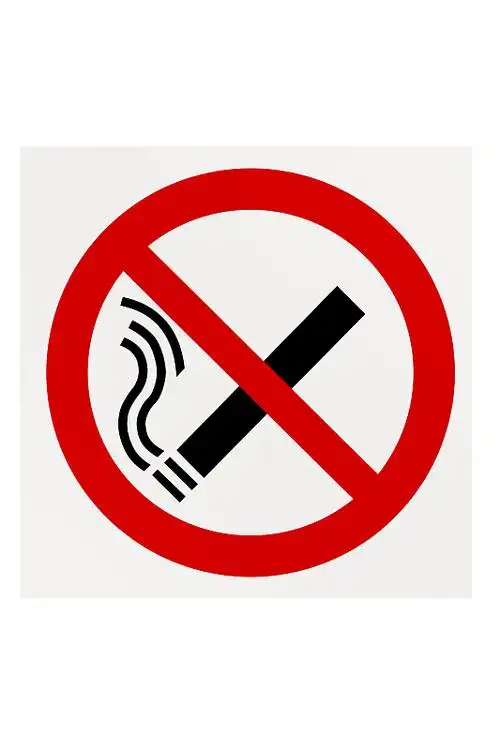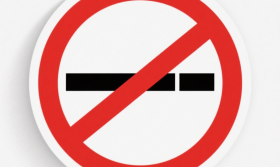Title: The Minimalist's Guide to Quit Smoking: 5 Simple, Intentional Strategies
Smoking is often portrayed as a complex addiction requiring elaborate solutions: nicotine replacement therapies, prescription medications, apps that track cravings, and support groups. For a minimalist, however, whose philosophy is rooted in simplicity, intentionality, and removing non-essential clutter, this approach can feel overwhelming and incongruent. Minimalism isn't just about owning fewer things; it's about clearing physical and mental space to focus on what truly matters. Quitting smoking is the ultimate act of decluttering—removing a harmful, costly, and time-consuming habit to make room for health, clarity, and freedom.
This guide strips away the complexity and presents five minimalist strategies to quit smoking. These methods align with the core tenets of simple living: mindfulness, intentionality, and the pursuit of essential well-being.
1. Embrace the "One and Done" Mindset: Declutter the Habit
Minimalism teaches us to be decisive. We don't keep clothes we don't wear "just in case"; we thank them and let them go. Apply this same decisive finality to smoking.
The Strategy: Choose your quit date not as a trial run, but as the day you permanently declutter tobacco from your life. This isn't about "trying to quit." It's about quitting. The language matters. By framing it as a single, definitive action—like donating a bag of unused items—you remove the ambiguity and mental clutter of "maybe" or "weaning." You are simply making a decision and acting on it.
How to Practice It:
- Set a Clear Date: Choose a date within the next two weeks. Mark it on your calendar. This is your decluttering day.
- Ritualize the End: On the eve of your quit date, have a final cigarette if you wish, but do it mindfully. Acknowledge its lack of true benefit. Thank the habit for whatever you believe it gave you (pauses, social connection) and then firmly state its purpose is over.
- Remove All Evidence: On your quit day, engage in a literal act of decluttering. Gather all lighters, ashtrays, and every last cigarette. Throw them all away. This physical act reinforces the mental decision, removing triggers and symbolizing a clean break.
This approach eliminates the complex planning of reducing cigarettes slowly, which often prolongs the psychological battle. It’s simple, clean, and absolute.
2. Master Mindful Awareness: Observe the Craving
At its heart, minimalism is about awareness—knowing what you have, why you have it, and what adds value. A craving feels like an urgent, powerful command. But it is not you; it is a transient wave of sensation and thought.
The Strategy: Instead of fighting a craving or immediately giving in, become a neutral observer. Use mindfulness to deconstruct the craving until it loses its power. This requires no special tools, just your attention.
How to Practice It: When a craving arises, pause. Don't act.
- Acknowledge It: Say to yourself, "This is a craving." Labeling it separates you from it.
- Get Curious: Where do you feel it in your body? A tightness in the chest? A tension in the jaw? Observe these physical sensations without judgment.
- Watch the Thought: Notice the thoughts that accompany it ("I need one," "Just one won't hurt"). See them as mere thoughts, not truths.
- Breathe: Focus on three slow, deep breaths. Feel the air filling your lungs with clean oxygen.
This process of observation often reveals that a craving peaks and dissolves within 5-10 minutes. By mindfully riding the wave, you avoid the clutter of a panicked internal struggle. You simply watch it come, and you watch it go.
3. Curate Your Environment: Design a Smoke-Free Space
A fundamental minimalist practice is curating your environment to support your desired life. Your current environment is likely curated for smoking.
The Strategy: Intentionally redesign your spaces and routines to make smoking inconvenient and undesirable while making healthy choices effortless. This is about being proactive rather than reactive.
How to Practice It:
- Identify and Disrupt Triggers: Your routines are full of smoking cues: coffee, alcohol, a work break, your car. disrupt them. Change your morning routine. Drink tea instead of coffee for a week. Take a different break—a five-minute walk instead of a smoke.
- Clean Deeply: Thoroughly clean your car, house, and patio. Wash the windows, shampoo the upholstery, and launder all your clothes. The goal is to erase the smell of smoke. You are creating a new, clean environment that you will be motivated to maintain.
- Introduce a Simple Positive: Place a glass of water on your desk instead of a pack of cigarettes. When a craving hits, drink the entire glass. It’s a simple, healthy action that occupies your hands and mouth and provides a moment of pause.
By decluttering your environment of triggers and designing it for health, you reduce the number of decisions you need to make, conserving willpower for when you truly need it.

4. Replace the Ritual, Not the Nicotine
Many cessation methods focus on replacing the nicotine. A minimalist might seek to replace the ritual—the deep breath, the hand-to-mouth action, the moment of pause—without introducing a new dependency.
The Strategy: Find an ultra-simple, healthy activity that mimics the calming ritual of smoking without any of the harm.
How to Practice It:
- Breathing Exercise: This is the ultimate minimalist tool. When you would normally step outside for a smoke, step outside for air instead. Inhale deeply for a count of four, hold for four, and exhale slowly for a count of six. Repeat five times. This addresses the physiological need for a deep breath and calms your nervous system.
- Herbal Tea or Water: The process of boiling water, steeping tea, and sipping it slowly provides a warm, soothing ritual for your hands and mouth.
- A Simple Walk: The act of leaving a stressful situation for a brief, solitary walk was often the true benefit of a "smoke break." Keep that benefit. Take the walk without the cigarette.
These replacements are simple, cost-effective, and add value to your life rather than simply substituting one product for another.
5. Focus on the Essential Gain: Define Your "Why"
Minimalism is driven by a focus on what is essential. Smoking is the epitome of non-essential. It adds no true value; it only takes away—health, money, time, and freedom.
The Strategy: Shift your focus from what you are giving up (a cigarette) to what you are gaining (everything else). Define your essential "why" with clarity.
How to Practice It: Write down your core reasons for quitting. Keep the list short and powerful.
- Financial Freedom: Calculate the monthly and yearly cost of your habit. This is money that could be spent on experiences, savings, or debt reduction.
- Physical Freedom: Think beyond "health." Think about the freedom to breathe deeply on a hike, to not be anxious about where the next smoke break will be, to be free from the smell.
- Mental Clarity: Smoking creates mental clutter—the constant planning, the guilt, the anxiety. Quitting clears this space, leading to greater focus and presence.
When a craving hits, don't think, "I can't have a cigarette." Think, "I am choosing financial freedom and clean lungs." This reframes your journey from one of deprivation to one of intentional gain, which is the very essence of minimalist philosophy.
Quitting smoking the minimalist way is not about adding more—more gadgets, more gums, more complex plans. It is about subtracting the unnecessary and returning to the essentials: a clear intention, mindful awareness, and a curated environment that supports your well-being. It is the ultimate act of decluttering your life for good.









